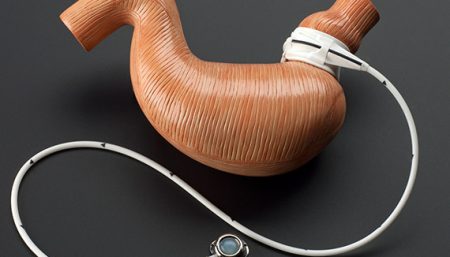The removal of excess skin and fat in the lower stomach area that hangs below the belt line is called panniculectomy and the excess fat is called the pannus, or abdominal “apron,” and can have several negative affects on one’s quality of life. The extra fold or folds of skin can hinder hygiene, put stress on the back, and make everyday activities difficult.

Abdominoplasty removes excess fat and skin and tightens the abdominal muscles, whereas a panniculectomy more specifically targets the area of excess tissue located underneath the belly button. |
The Procedure:
The duration of the surgery will vary based on how much skin and fat is present and whether or not you are also having a tummy tuck, hystrectomy, hernia repair or another abdominal surgery.
This surgical procedure requires 3 to 5 hours, and is performed with general anesthesia. The surgeon creates a horizontal incision running from hip to hip, along with a vertical incision which runs downward from this line to the pubic region. While extensive, these incisions allow the surgeon free access to the underlying tissues of the lower abdomen. Through this incision, excess overhanging fat and skin are surgically removed. When much of the excess tissue is fat rather than skin, lipoplasty may be used in addition to traditional surgical techniques. The remaining tissues are smoothed into aesthetically pleasing contours. Then, the remaining skin is sutured together along the incisions.

Post operative care will require sponge bathe and wearing a support garment after first few days. Patients are also advised to avoid strenuous activity for a few weeks. However, patients can usually return to work within two weeks of the operation. Stitches are generally removed in about a week, while deeper sutures stay in for two or three weeks. The scars incurred by the surgery will begin to look worse before they look better, but this is normal. They will fade as healing continues. After a few months, the patient will really begin to see the results of the surgery and will look and feel better.
Who is the Right Canditate?
A Good candidate for panniculectomy is one
- who have lost a significant amount of weight and has noticed the presence of excess skin and fat which hangs below the belt-line.
- Who has had stable weight for at least six months, and, should not be planning to bear children.
- Who is following a reasonable diet and should be in relatively healthy condition.
If you have recently had gastric bypass surgery or adjustable gastric banding surgery, then wait for at least one year before undergoing panniculectomy to ensure that your body weight has stabilized and that any health issues arising from obesity, such as diabetes or high blood pressure, are under control.
Risks
Panniculectomy risks include:
 Reaction to anesthesiaa
Reaction to anesthesiaa- Infection
- Bleeding
- Excessive scarring
- Fluid collection (seroma) in the newly created abdominal space
- Blood clots in the leg or lungs
- Revision surgery
For more input consult a plastic surgeon who has an expertize in panniculectomy.
References:
Disclaimer
The Content is not intended to be a substitute for professional medical advice, diagnosis, or treatment. Always seek the advice of your physician or other qualified health provider with any questions you may have regarding a medical condition.



